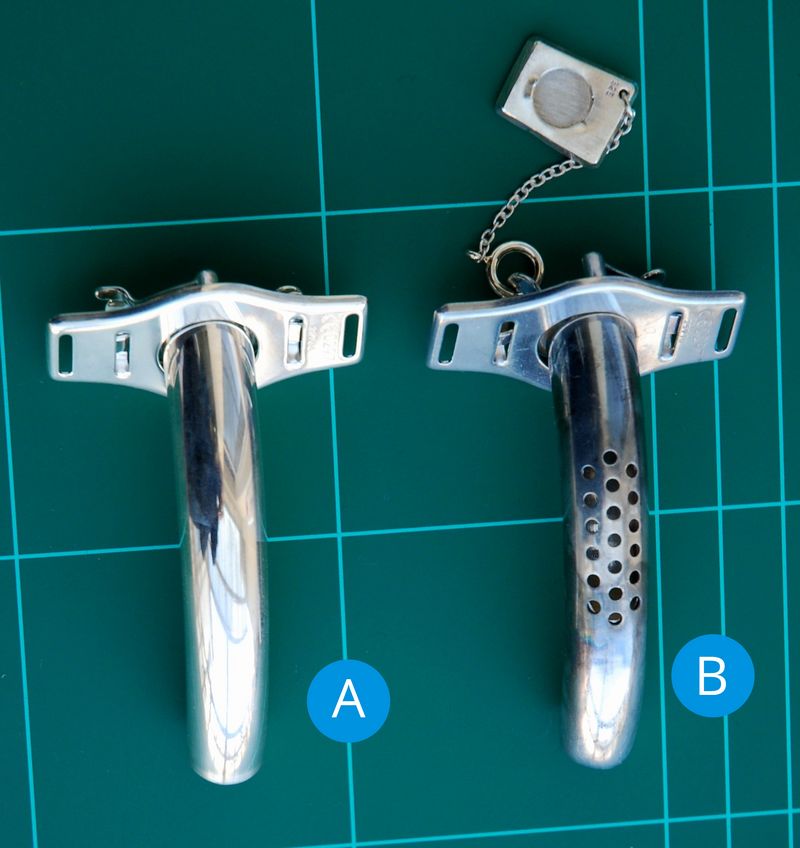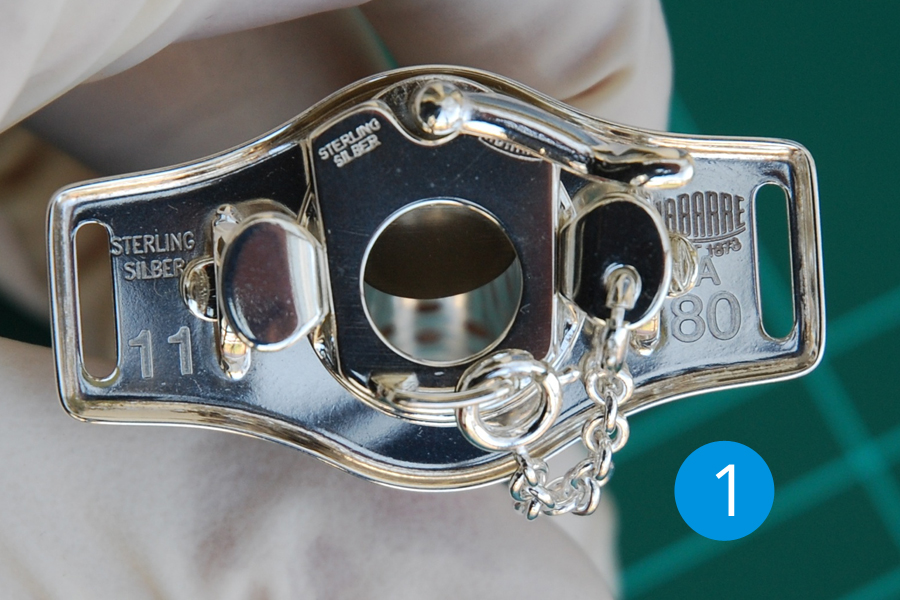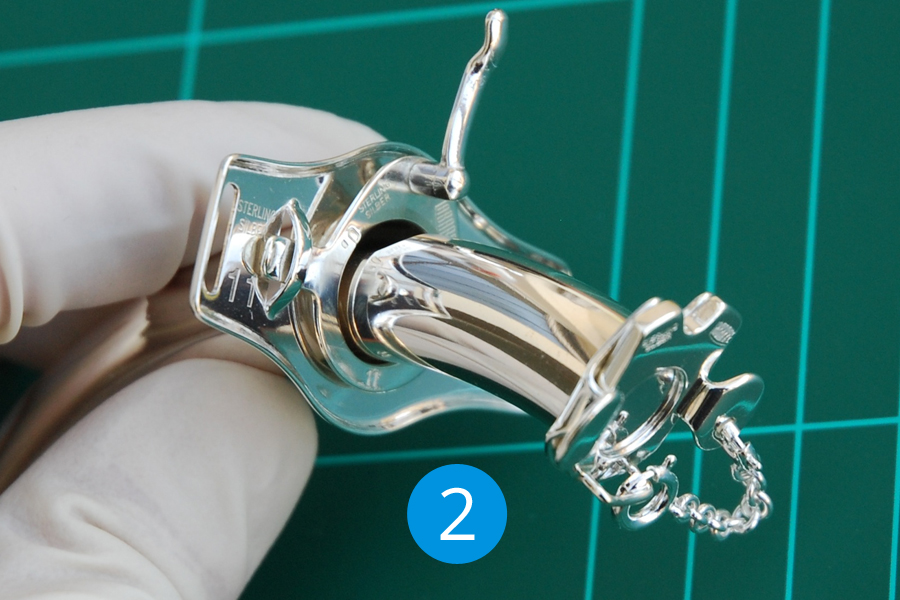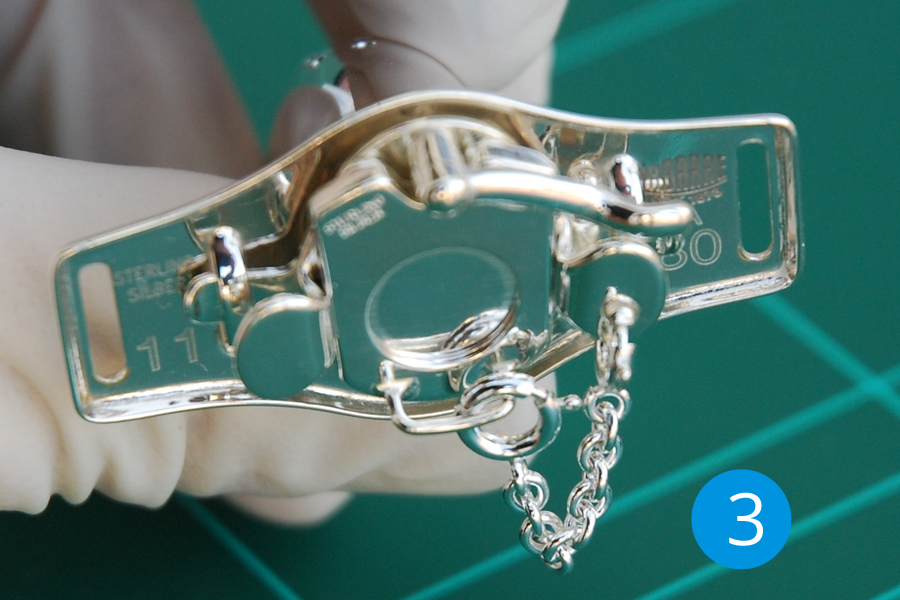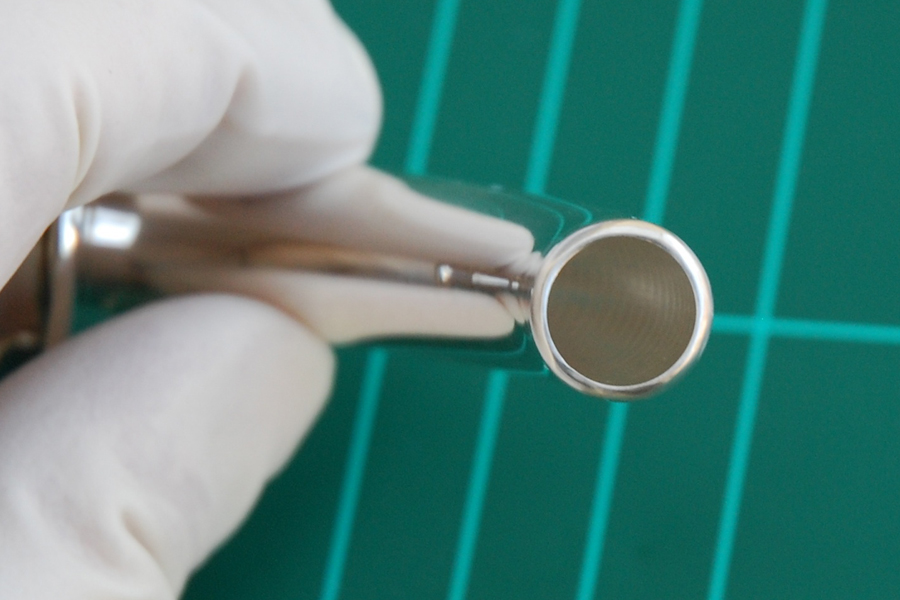Silver tracheostomy tubes
Silver tubes are the oldest kind of tracheal cannula, and remain largely unchanged to this day. Silver tubes are available in lots of lengths and diameters, sieved or unsieved, with a speaking valve or without. The dimensions of a silver tube are given as follows: Outer tube diameter at the tip of the tube in mm / tube length in mm. This means that a tube with the designation 11/80 is 80 mm long and has a diameter of 11 mm at the end in the trachea. As well as the standard curve, there are many other curve variations.
New unsieved silver tracheostomy tube (A).
Used sieved silver tracheostomy tube (B).
The silver oxidizes, turning the tube gray and black.
The sieved part of the tube enables air to flow to cranial if the tube is closed (e.g. by the speaking valve), making speech possible.
The standard speaking valve in a silver tube is a thin silver disc (1) that is fitted by a tiny hinge to the top of the inner cannula (2). It moves back when the patient inhales, enabling air to flow into the trachea. When the patient exhales through the tracheostoma, the silver disc moves forward (3) and closes the entrance to the cannula.
Advantages:
- The maximum outer diameter of a tracheostomy tube is determined by the tracheostoma and the trachea. Since the material used for silver cannulas is quite rigid, they do not need to be very thick. So the minimum respiratory diameter (the trachea or tracheostoma in laryngectomees) is only reduced slightly, which is significant if an inner cannula is also being used. The material thicknesses of the inner and outer cannulas are added together, reduce the diameter of the tracheal cannula, and increase flow resistance to the power of 4.
- Silver cannulas last for many years and are easy to clean.
- They can also be sterilized.
Disadvantages:
- Silver tubes do not bend, and because they are quite sharp often damage the wind pipe and the skin of the neck. Even if the cannulas are adapted perfectly, these injuries cannot always be avoided and may be dangerous.
- Silver cannulas are rigid, and transmit head movements to the wind pipe. Mechanical irritation of the wind pipe leads to an increase in secretion and atrophy of the ciliated epithelium.
- Silver transfers the warmth of the trachea to the outside. This means the silver tracheostomy tube is relatively cold in the wind pipe and may cause thermal irritation, which will also increase secretion.
- Patients rarely use silver cannulas in combination with an HME filter because of the lack of a 22-mm connector (which also does exist), although this should be the standard today.
- If a silver cannula is closed with a finger so the patient can speak, there is a high risk of injury to the trachea from the pressure on the cannula.
- Speaking with a voice prosthesis using a silver tracheostomy tube is difficult as there is no airtight seal of the tube at the tracheostomy
NOTE: A laryngectomee should never be fitted with a tracheostomy tube with a simple "speaking flap" (as shown above) as speaking valve, because otherwise he could only exhale past the cannula – if at all. If the patient had to cough, the lack of a cough valve would cause extreme pressure in the airways.

